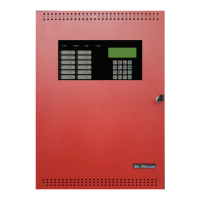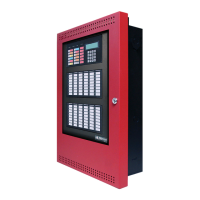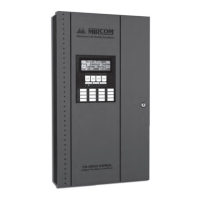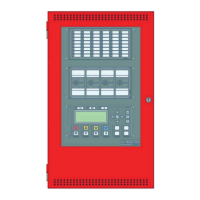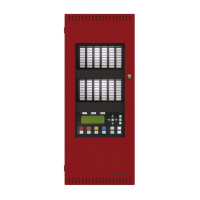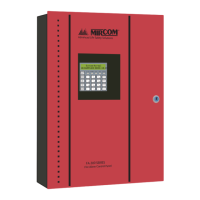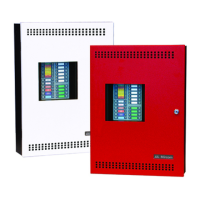Glossary
10
Glossary
Alarm Condition
Occurs when devices such as detectors, pull stations, or sprinklers are activated. In a single stage system, this condition
will activate all signalling devices throughout the building. In a two stage system, this condition will activate an alert signal
and the General Alarm timer.
Circuits
Refers to an actual electrical interface and can be classified as input and output. The terms “circuit” and “zone” are often
used interchangeably in the fire alarm industry.
Fast Flash Rate
120 flashes per minute is the rate at which an LED will flash to indicate a supervisory alarm.
Input Circuit
For this panel, the input circuit consists of addressable devices.
Output Circuit
For this panel, the output circuit is connected to audible or visual signalling devices, synchronized or unsynchronized.
Latching Circuit
A circuit that, when activated, will cause a condition on the panel that cannot be cleared until the panel is reset.
LED
The light-emitting diodes (LEDs) illuminate amber, red, or green. When lit, LEDs provide information regarding the status
of the panel.
Non-latching Circuit
A circuit that, when activated, will cause a condition on the panel that will be cleared once the circuit is deactivated. This
term is used to describe supervisory and trouble circuits.
Non-Silenceable Circuit
A signal circuit that cannot be silenced by pressing the Signal Silence button.
Relay Circuit
A circuit in a fire alarm system that connects relay devices (e.g. fan damper relays, etc).
Remote Annunciator
A device that visually indicates, either by LCD or LEDs, the floor or zone where the alarm originated.
Silenceable Circuit
A signal circuit that can be silenced by pressing the Signal Silence button.
Supervisory Condition
Occurs when the system detects open circuits, short circuits, and grounds. A supervisory condition is one that would
interfere with the operation of the fire alarm system.
Supervisory Alarm Condition
Occurs when the system detects a short on a supervisory circuit.
Trouble Condition
Occurs when an abnormal condition such as a problem in the wiring, battery or power circuits exists in the fire alarm
system.

